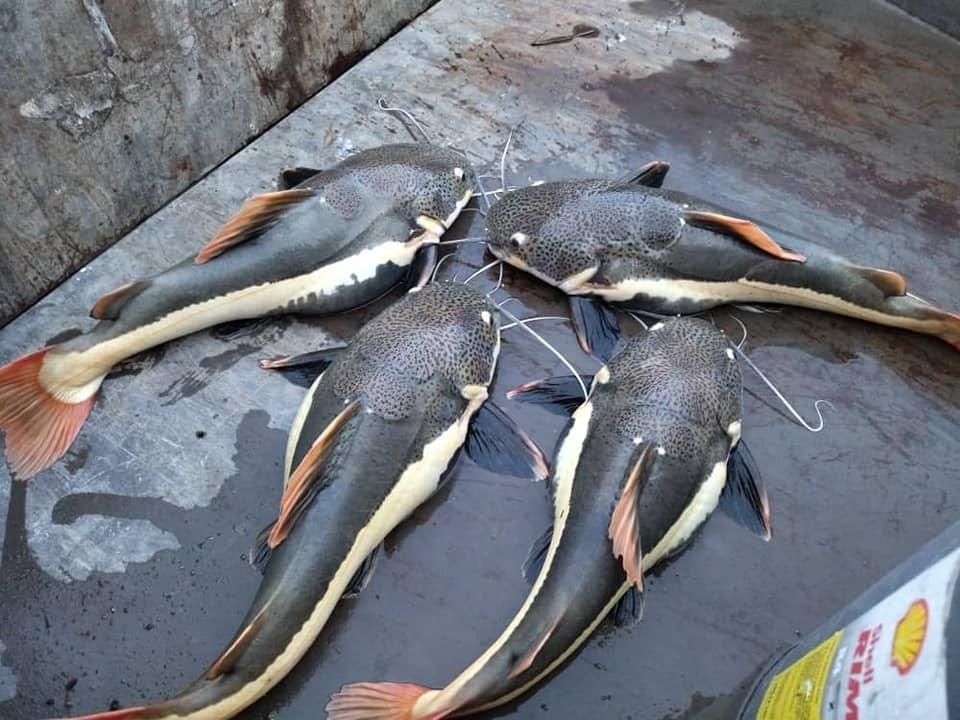Invasion by foreign species a fishy problem for Perak anglers
Concerns abound over the release of foreign invasive species into the country's freshwater bodies and the effect this will have on local ecosystems.
Every day at sunrise, fisherman Mohd Nazim Samsudin goes down to Sungai Perak to cast his nets. Normally, he brings in a good haul of fish and lobsters.
Two weeks ago, though, he found something in his nets that he had never seen in the river before – a redtail catfish.
“I was shocked,” he said. “Fishermen in this village had never caught such a species.”
But his surprise that day didn’t end there. His friends from Kampung Sungai Buaya in Perak also reported similar findings with one discovering nine fish in a single catch.
Two days before, the villagers had heard of hundreds of cages near Teluk Intan reportedly belonging to a fish farming company being washed away in the river. They fear this means that hordes of redtail catfish which were being illegally farmed are now roaming free.
The redtail catfish can reach up to 1.8m in length and about 80kg in weight.
This is a problem as the redtail catfish is a predatory species.
The fishermen are now experiencing the effect of the escape on their catch. Before this, Nazim said he used to bring in two or three kg of fish and lobster every day.
“Now, I can hardly get 1kg,” he told MalaysiaNow.
Their concern is that the river’s ecosystem will be affected if nothing is done.
The redtail catfish is native to the Amazon and other river basins in South America. It can reach up to 1.8m in length and about 80kg in weight.
The Perak Fisheries Department had said that the species is prohibited from being reared in cages. But in the incident near Teluk Intan, 30 tonnes of fish were believed to have escaped into the river.
Department director Zaki Mokri spoke of concerns that the fish might breed and become a threat to local freshwater species and resources.
Redtail catfish from the Mekong River were also said to have been released into Sungai Perak following the first incident.
Nazim said the fish were now being found not only at the main river body but also in smaller tribituaries and streams near the jetty.
Another villager named Firdaus said the locals had known about the cages but did not know what species of fish were being reared.
On April 2, he posted several photos of the redtail catfish on the Facebook page “Kg Sungai Buaya Kg Gajah”, which quickly went viral.
“Villagers do not know what to do with the fish since not many people consume it,” he said. “Some of us just gave our catch to our friends and other villagers who wanted to taste it for the first time.”
The fisheries department (DoF) acknowledged the problem of foreign invasive species in local ecosystems, adding however that local species still dominate in most areas with the exception of Puchong.
One area which was invaded by foreign species was Tasik Temenggor in Perak where, in 2016, a growing population of Nile tilapia, originally bred in cages, was detected.
The department said these fish were able to spread as far as 40km away from the location of the cages.
A population of peacock bass was also discovered in Tasik Timah Tasoh in Perlis, where it was the third highest catch in a 2017 study done by the department.
“When the species is released, the ecology and food chain will be disrupted since an additional predatory species has been introduced.”
In a statement to MalaysiaNow, the department said foreign species are brought in for different purposes such as the breeding of ornamental fish and aquaculture.
“The escapees go into the ecosystem, usually because the ponds (which host the species) do not adhere to the biosecurity SOPs.”
Others are brought in as hobbies, such as the algae eater fish.
“The DoF is giving serious attention to the issue of these invasive species,” it said, adding that some could even threaten human safety if allowed to breed near habitated areas.
Universiti Malaysia Terengganu deputy vice-chancellor Mazlan Abd Ghaffar said a main concern is the effect on ecology.
“When the species is released, the ecology and food chain will be disrupted since an additional predatory species has been introduced.”
But he is even more concerned about the possibility of local species becoming “hybridised”.
“The local species are considered our natural treasures,” he said.
In the meantime, the DoF said several measures have been taken including the formation of a technical committee for the management of “dangerous alien species” and the gazettement of fisheries methods for inland aquaculture fisheries.
There is also an updated list of prohibited fish available, and the department is working to enhance studies on the entry routes of foreign species as well as the impact of their entry, breeding and release into local waters.
“Farmers who do not comply with the rules can be subject to action,” it said. “At the moment, Johor, Kelantan and Melaka are ready to implement these rules.”
Subscribe to our newsletter
To be updated with all the latest news and analyses daily.
